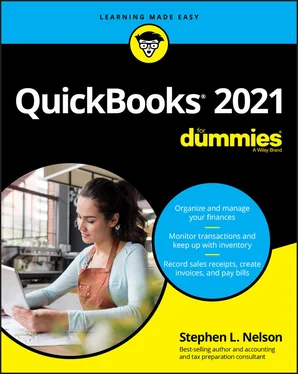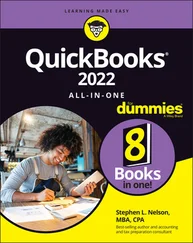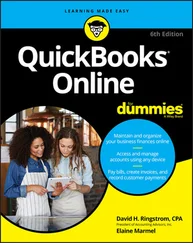Before you fiddle with your computer or the QuickBooks software, you need to choose the date — the so-called conversion date — on which you want to begin using QuickBooks for your financial record keeping.
This decision is hugely important, because the conversion date that you choose dramatically affects both the work you have to do to get QuickBooks running smoothly and the initial usefulness of the financial information that you collect and record by using QuickBooks.
You have three basic choices:
The right way: You can convert at the beginning of your accounting year (which, in most cases, is the same as the beginning of the calendar year). This way is the right way for two reasons. First, converting at the beginning of the year requires the least amount of work from you. Second, it means that you have all the current year’s financial information in one system.
The slightly awkward way: You can convert at the beginning of some interim accounting period (probably the beginning of some month or quarter). This approach works, but it’s slightly awkward because you have to plug your year-to-date income and expenses numbers from the old system into the new system. (If you don’t know what an interim accounting period is, see Appendix B.)
The my-way-or-the-highway way: You can convert at some time other than what I call the right way and the slightly awkward way. Specifically, you can choose to convert whenever you jolly well feel like it. You create a bunch of unnecessary work for yourself if you take this approach, and you pull out a bunch of your hair in the process. But you also have the satisfaction of knowing that through it all, you did it your way — without any help from me.
I recommend choosing the right way. What this choice means is that if it’s late in the year — say, October — you just wait until January 1 of the next year to convert. If it’s still early in the year, you can retroactively convert as of the beginning of the year. (If you do this, you need to go back and do your financial record keeping for the first part of the current year by using QuickBooks: entering sales, recording purchases, and so on.)
If it’s sometime in the middle of the year — say, Memorial Day or later — you probably want to use the slightly awkward way. (I’m actually going to use the slightly awkward way in this chapter and the next chapter because if you see how to convert to QuickBooks by using the slightly awkward way, you know how to use both the right way and the slightly awkward way.)
The trial balance of the century
After you decide when you want to convert, you need a trial balance.
“Yikes!” you say. “What’s a trial balance?” A trial balance simply lists all your assets, liabilities, and owner’s equity account balances, as well as the year-to-date income and expense numbers on a specified date (which, not coincidentally, happens to be the conversion date). You need this data for the QuickBooks Setup process and for some fiddling around that you need to do after you complete the process.
 Creating a trial balance doesn’t have to be as hard as it sounds. If you’ve been using another small-business accounting system, such as the simpler Quicken product from Intuit or the Simply Accounting program from Computer Associates, you may be able to have your old system produce a trial balance on the conversion date. In that case, you can get the balances from your old system. (Consider yourself lucky if this is the case.)
Creating a trial balance doesn’t have to be as hard as it sounds. If you’ve been using another small-business accounting system, such as the simpler Quicken product from Intuit or the Simply Accounting program from Computer Associates, you may be able to have your old system produce a trial balance on the conversion date. In that case, you can get the balances from your old system. (Consider yourself lucky if this is the case.)
Just to split hairs, the trial balance should show account balances at the start of the first day you use QuickBooks for accounting. If the conversion date is 1/1/2021, for example, the trial balance needs to show the account balances at one minute past midnight on 1/1/2021. This is the same thing as showing the account balances at the end of the last day that you’ll be using the old accounting system — in other words, at midnight on 12/31/2020 if you’re converting to QuickBooks on 1/1/2021.
If your old system is rather informal (perhaps it’s a shoebox full of receipts), or if it tracks only cash (perhaps you’ve been using Quicken), you need to do a bit more work:
To get your cash balance: Reconcile your bank account or bank accounts (if you have more than one bank account) as of the conversion date.
To get your accounts receivable balance: Tally all your unpaid customer invoices.
To get your other asset account balances: Know what each asset originally costs. For depreciable fixed assets, you also need to provide any accumulated depreciation that has been claimed for that asset. ( Accumulated depreciation is the total depreciation that you’ve already expensed for each asset.) By the way, check out Appendix Bif you have questions about accounting or accounting terminology, such as depreciation.
To get your liability account balances: Know how much you owe on each liability. If you trust your creditors — the people to whom you owe the money — you may also be able to get this information from their statements.
You don’t need to worry about the owner’s equity accounts. QuickBooks can calculate your owner’ equity account balances for you, based on the difference between your total assets and your total liabilities. This method is a bit sloppy, and accountants may not like it, but it’s a pretty good compromise. (If you do have detailed account balances for your owner’s equity accounts, use these figures — and know that you’re one in a million.)
If you’re using the slightly awkward way to convert to QuickBooks — in other words, if your conversion date is some date other than the beginning of the accounting year — you also need to provide year-to-date income and expense balances. To get your income, cost of goods sold, expenses, other income, and other expense account balances, you need to calculate the year-to-date amount of each account. If you can get this information from your old system, that’s super. If not, you need to get it manually. (If you suddenly have images of yourself sitting at your desk late at night, tapping away on a ten-key, you’re probably right. What’s more, you probably also need to allocate half of another Saturday to getting QuickBooks up and running.)
Just for fun, I created the sample trial balance shown in Table 2-1. This table shows you what a trial balance looks like if you convert at some time other than at the beginning of the accounting year.
TABLE 2-1A “Slightly Awkward Way” Sample Trial Balance
| Trial Balance Information |
Debit |
Credit |
| Assets |
|
|
| Checking |
$5,000 |
|
| Fixed assets |
$60,000 |
|
| Accumulated depreciation (fixed assets) |
|
$2,000 |
| Liabilities information |
|
|
| Loan payable |
|
$10,000 |
| Owner’s equity and income statement information |
|
|
| Opening balance equity |
|
$20,000 |
| Sales |
|
$60,000 |
| Cost of goods sold |
$20,000 |
|
| Supplies expense |
$2,100 |
|
| Rent expense |
$4,900 |
|
| Totals |
$92,000 |
$92,000 |
If you’re converting at the beginning of the accounting year, your trial balance instead looks like the one shown in Table 2-2. Notice that this trial balance doesn’t have any year-to-date income or expense balances.
Читать дальше

 Creating a trial balance doesn’t have to be as hard as it sounds. If you’ve been using another small-business accounting system, such as the simpler Quicken product from Intuit or the Simply Accounting program from Computer Associates, you may be able to have your old system produce a trial balance on the conversion date. In that case, you can get the balances from your old system. (Consider yourself lucky if this is the case.)
Creating a trial balance doesn’t have to be as hard as it sounds. If you’ve been using another small-business accounting system, such as the simpler Quicken product from Intuit or the Simply Accounting program from Computer Associates, you may be able to have your old system produce a trial balance on the conversion date. In that case, you can get the balances from your old system. (Consider yourself lucky if this is the case.)










